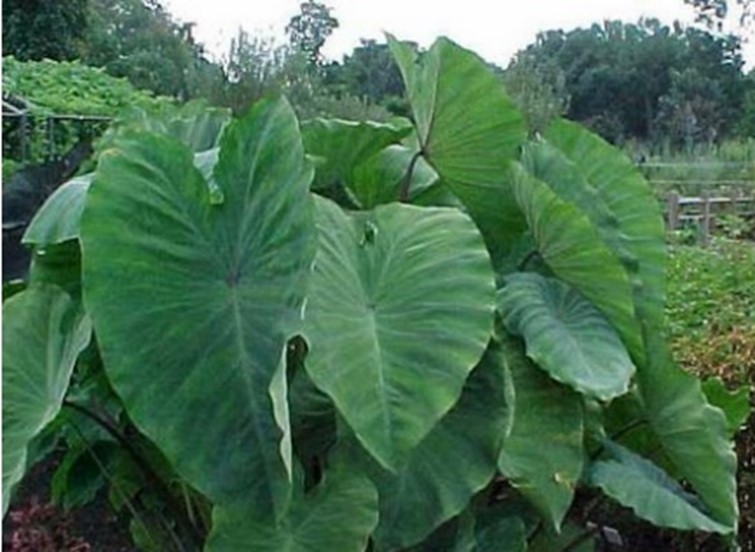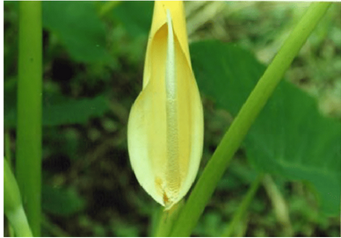Elephant Ear
Colocasia esculenta


Characteristics
- Type: Perennial
- Zone: 8 – 10
- Height: 3 – 6 Feet
- Spread: 3 – 6 Feet
- Bloom Time: Rarely flowers
- Bloom Description: Yellowish-White
- Sun: Full Sun – Part Shade
- Water: Medium – Wet
- Maintenance: Medium
- Flower: Insignificant
- Tolerates: Wet Soil
Culture
Elephant Ear grows best in fertile, humusy, organically rich, medium to wet soils in part shade or filtered sun. When growing plants in garden soils, provide regular moisture, especially during dry summer periods, and do not allow soils to dry out. Plants produce prodigious amounts of growth and appreciate regular fertilization during the growing season. Site plants in locations protected from strong winds. Tubers may be left in the ground year-round in USDA Zones 8-10.
Noteworthy Characteristics
Colocasia esculenta, is a tuberous, stemless, frost-tender perennial of the arum family which typically grows 3-6′ tall and as wide. For gardeners, it is primarily grown as a foliage plant with huge, heart-shaped to arrowhead-shaped, conspicuously-veined, downward-pointing, peltate leaves (to 2′ long) on long, stout, succulent stems. As the common name suggests, each leaf purportedly resembles an elephant’s ear. Calla lily-like flowers with yellowish-white spathes and spadixes are infrequently produced and usually hidden by the foliage when they do occur. This species is also commercially grown as a food crop in Hawaii (poi is made from the tubers) where it is commonly called taro.
Problems
No serious insect or disease problems.
Garden Uses
Lends a large tropical look to gardens, water margins and large containers. Excellent as a specimen or in groups.
Courtesy of Missouri Botanical Society Plant Finder